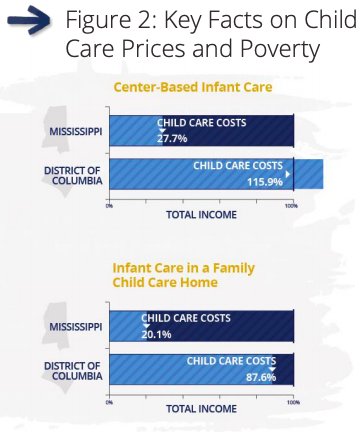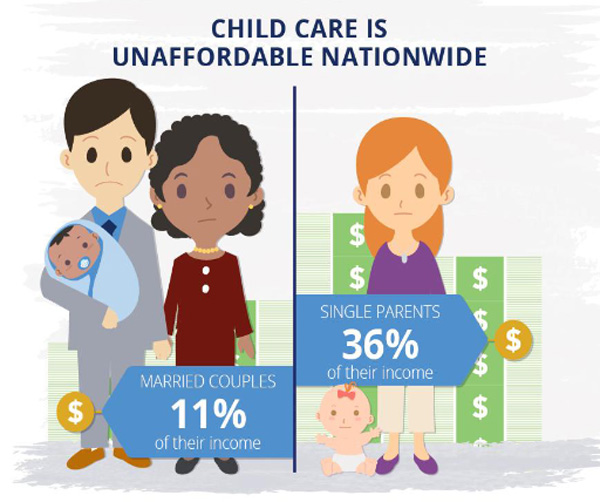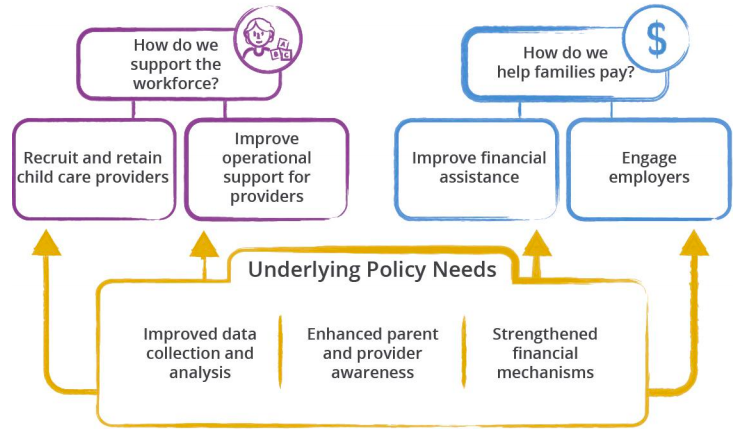
Share On Social!
Over 12 million U.S. babies, toddlers, and preschoolers spend time in child care.
Are you aware of how pricey that child care is?
The price of child care is sky-high almost everywhere, but certain families face inequities and pay even more depending on where they live, according to the new report from Child Care Aware.
California (39.3% Latino) is home to the most expensive center-based infant care. Families here pay 17.6% of their annual income.
Nebraska (11.2% Latino) is home to the most expensive family child care. Families here pay 14% of their annual income.
Low-income families should spend no more than 7% on child care, according to federal guidelines.
“Every family should be able to access affordable and high-quality child care. Yet this is not currently the case, especially for families of color and families with low-incomes,” said Dr. Lynette Fraga, head of Child Care Aware, in a statement.
Better Child Care Can Help us All
Child care plays a key role in the entire health care system.
Not only would better child care be beneficial for low-income parents, but better child care will kick start a child’s development and give them a better chance at health equity in the future.
 But in places like Washington, D.C., parents face child care prices that are more than their actual total median income (see image).
But in places like Washington, D.C., parents face child care prices that are more than their actual total median income (see image).
Oregon has already set an example as to how sustainable financing that is dedicated solely to child care can be successful. This report mentions: “Oregon’s recent sales tax on large corporations that will now dedicate $200 million per year to early childhood.”
When examples are made they pave a path for other schools to follow in their footsteps.
There is hope that rural communities can reap the benefits of this system as well. Rural communities are more prone to child care deserts.
50% of all Americans live in child care deserts, which are defined as regions where there are no licensed child care providers for kids under the age of 5 and/or there is less than one slot in an accredited child care center for every 3 children under the age of 5.
Child Care Price Policy Recommendations
The Child Care Aware report recognizes that child care is about children. These tiny humans are in the very early stages of development.
Poor quality of child care can compromise a child’s development.
 Thus, the report addresses two main questions:
Thus, the report addresses two main questions:
- How can we best support the child care workforce in sustaining quality care?
- How do we help families pay for it?
The first answer involves recruiting and retaining more child care providers. This will also reduce child care deserts.
The second answer means improving operational support for providers. This includes raising reimbursement rates to the federally recommended level. A recent report from the Department of Health and Human Resources indicates that current low pay rates could be limiting access to child care providers.
The report also lays out three key policy needs:
- Improve data collection and analysis. Lack of information such as enrollment and number of slots available makes it difficult to track progress. An Improvement would allow policy makers to get feedback on the changes that have been made.
- Enhance patient and provider awareness. An effective outreach strategy is essential for successful policy initiatives. Parents and providers needs to be better informed about the resources that they have.
- Strengthen financial mechanisms. Policymakers at all levels should ensure that all funding sources for child care are tied to quality and safety standards to avoid loopholes that are harmful to children.

“The goal of this report is not to find incremental ways to reduce the marginal cost of quality care, because children and child care are not products,” according to the report.
Make Child Care More Accessible for Families
The need for high-quality, accessible, affordable child care is very important. This will help with the economic problems that we see.
We all know that early child care has the power to help children be successful in the future.
Here are some steps everyone can take to help families:
- Register to vote, and vote.
- Gather regional facts and data about child care and early learning to strengthen your message by exploring your local child care resource and referral agency’s website.
- Find out who represents you at the local, state and national levels by entering your address.
- Employers can even learn more about child care resources and referral agencies in their community.
“We remain optimistic that with increased public and private investment and meaningful solutions that support working parents, we can ease the burden on American families,” Fraga said. “Through careful planning by the government at the federal, state and local levels, all of US can work toward quality, affordable child care settings available for working parents in every community.”
“It is time for us to take significant action for our children and economic future.”
Explore More:
Maternal & Child HealthBy The Numbers
142
Percent
Expected rise in Latino cancer cases in coming years



